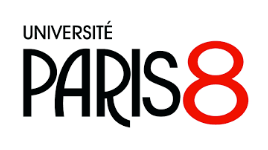17h00
Salle 159, UAR-CNRS Pouchet, 59 rue Pouchet 75017 Paris
Lien Zoom : à venir
L'interprétation LSF-anglais est assurée
Searching for the route of Language: From gesture to Sign and from linear to simultaneous constructions, an overview of some studies.
Olga Capirci
LaCAM Lab ISTC CNR, Rome
A consolidated tendency in language research is to consider ‘gestures’ and ‘signs’ as two distinct categories separated by a "cataclysmic break". According to a different approach, gestures and signs have their common origin in action and both are considered as part of language.
In recent research, considerable efforts are being spent in attempting to consider together representational techniques in the manual modality described by different traditions of studies: from symbolic gestures to co-speech and silent gestures in children and adult spontaneous communication, to signs in Sign Language research.
I will present some research conducted by our Laboratory that compare co-speech gestures produced by hearing children and adults and signs produced by deaf children and adults exposed to a sign language. These studies clearly indicate that the two forms of communication are not separated behaviors but should rather be considered as a continuum.
On the other hand, language evolution research has shown that a likely emergent trajectory of language, regardless of language modality, is from holistic expression to linearly segmented, compositional and linearized expression. Predominantly, language evolution research, including sign language emergence has concentrated on segmented linearized structure as an emergent property of language. However, the visual modality in which sign languages are articulated allow segmented elements of a perceptually simultaneous event to be combined also simultaneously, not only linearly: Signers can take advantage of the full potential of the visual modality and use multiple body articulators (i.e., both hands and arms, torso, head, facial expression and eye gaze) in highly iconic constructions.
I will present some studies carried out for the PhD by Anita Slonimska in collaboration with me and Asli Ozyurek whose findings highlight the role of modality-specific adaptive capabilities in linguistic expression and are relevant for the broader discussion about the multi-modal and multi-linear origins of language.



